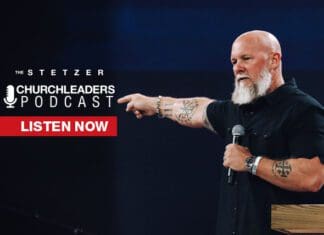Stress is high these days. We need to boost our team morale.
You and your team may not have experienced one major thing in particular. Still, the cumulative effect of many small and unfamiliar stresses over a sustained period of time may be very real for you.
Or you may have experienced one or two significant problems, disappointments, or setbacks that sent your stress levels through the roof.
Either way, it’s very clear that stress is high these days and that impacts the morale of your team.
Here’s a shortlist of how stress can impact the morale of your team:
- Doubt reduces confidence.
- Division replaces unity.
- Fatigue lowers productivity.
- Criticism trumps care.
- Disappointment steals joy.
- Distraction derails focus.
- Fear robs faith..
I pray that not many from this list are true for you and your team, but it’s almost impossible to escape all of them.
One pastor said, “Everyone I listen too and many blogs I read talk about how much ministry will change when we come back and re-open our church doors. I can’t figure out what exactly will change, and when I ask, the answer is something like, ‘Well, no one really knows for sure, but it’s going to change.’”
That would stress any leader, and as the leader goes, so goes the team!
4 practical principles you can do to alleviate stress and boost team morale.
Boost Team Morale #1) Communication helps reduce insecurity.
In this case, I’m not referring to insecurity as in an insecure person or insecure leader, but the kind of insecure moment that can get to anyone.
An insecure moment is something that shakes up or removes internal stability as the result of an unexpected change or problem.
Good communication helps reduce the insecure moments your team may have.
Good communication is all about being first in their shoes.
About seven weeks ago, when COVID hit the headlines, I sent an email to our staff about how we were handling working at home and working at the office. I thought it was perfectly clear. It wasn’t.
I tried a second email, discussing the options of how to transition to working at home. I was sure I did a good job. I didn’t. There were still questions.
My mistake is that I was communicating from my perspective, from the way I think. That’s OK, but not if I don’t first understand what the team is thinking by putting myself in their shoes.
That concept alone can make the difference of putting your team at ease or increasing anxiety in times of stress.
In times of stress and change, your best communication will be clear, frequent, and as accurate as possible.
When things change rapidly, you can’t worry about your message being perfect, and it’s going to change. Your job is to make it clear and accurate in the moment. That requires doing your homework, even if you don’t have much time.
A good rule of thumb for communication during a crisis, keep your team updated with:
- What’s happening now
- What decisions have been made
- What’s next
- What is expected
Boost Team Morale #2) Honesty promotes trust.
All lasting relationships are built through trust.
The greater the trust, the higher the morale.
When your team is going through challenging times, trust is all the more important. Trust is the glue that holds us together in all forms of relationships.
Stress will strain and test the trust inherent in good relationships. Sustained stress can temporarily stretch trust thin because emotions run high.
The transparency connected to honesty sustains trust in even the most challenging times.
You don’t always need to deliver good news. That’s unrealistic, and your team can handle difficult stuff. They want to be part of the solution. The only way to truly be in it together is actually to be in it together.
For example, if your church is struggling under financial pressure and setbacks, let your team know. Don’t keep them in the dark. That doesn’t mean you are dumping the problem on them; it means you are keeping them informed with the current and honest reality.
Let’s take a one on one example, if someone is upset with me, I prefer they tell me. I can work with that, but if I don’t know, I’m not able to lead well. The same is true for you. Healthy relationships require honesty in both directions.
The principle of honesty promotes trust is simple to understand but can be compromised with increased conflict from stress. That takes us to the next point.
Boost Team Morale #3) Grace heals conflict.
It’s impossible to endure elevated levels of stress and not experience conflict. Even if only half your team are really feeling the stress, it’s going to affect your whole team.
Don’t make the fact that you’re experiencing conflict your focus; instead, pour your energy into resolving the conflict.
The first step is to own it.
Acknowledge that it’s happening, but don’t add drama to it.
Instead, start and maintain healthy conversations.
A healthy conversation will first separate the issue from the person. Don’t attack a person, solve the problem.
Above all, give generous amounts of grace during these stressful times. That means give the benefit of the doubt, listen before you speak and remember you are on the same team.
Next, determine what is actually a problem to solve or merely a disagreement of opinion. It’s perfectly normal for leaders to disagree. But remember, never let disagreements escalate to the point where they break down your relationships or slow down your mission.
For example, one church team is currently in disagreement about when to re-open the doors of their church.
That kind of disagreement is normal, but they can’t let it divide them.
Speed and unity constitute your edge in any crisis season, so determine to resolve the conflict quickly for the sake of your mission.
Boost Team Morale #4) Alignment increases unity.
Team alignment is essential for any healthy and productive team.
The interesting thing is how alignment is perceived from church to church.
- When the team is healthy, alignment is perceived as something positive. “We’re in this together.”
- When the team is unhealthy, alignment is perceived as something negative. “We’re being told what to do.”
That is a large generalization for sure, but the concept is accurate.
“We’re being told what to do” is not a statement of unity.That statement represents an “us and them.”
That is a big step toward division.
Alignment and team are best thought of as synonymous. The very nature of team is “together,” it is of one mind, purpose, and spirit.
Unity is central to all successful teams, and the stronger the unity, the higher the morale.
This is a tough season we’re all in…
I encourage you and your team to:
- Communicate quickly and accurately.
- Double down on honesty.
- Focus on the big rocks and let the little stuff go. (Lots of grace.)
- Fight for unity.
This article about how to boost team morale originally appeared here.














